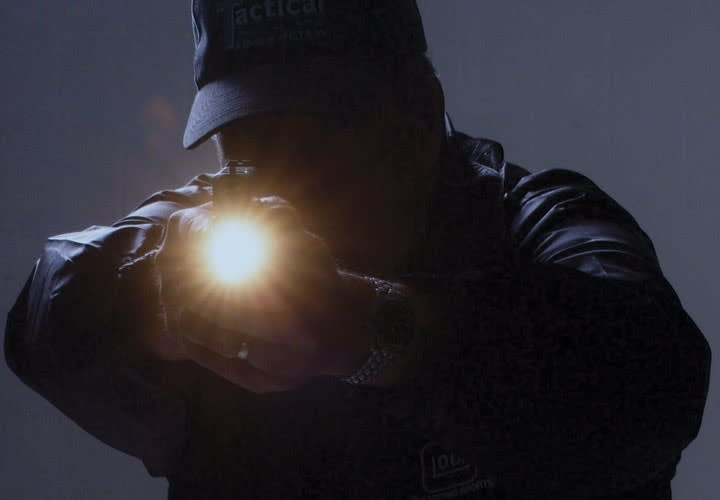Tactical Considerations
For all of its benefits, a high-lumen light is not suitable for every situation. For instance, this type of dispersed illumination is not designed to penetrate fog and smoke. "It has a broad beam, very high output, so it will bounce right off the smoke and into your eyes, says Sharrah. "That's another reason to have a different tool for a different application."
As Sharrah notes, different flashlights perform better in certain situations. When it comes to high-lumen lights, their more intense light creates more intense shadows. "You can actually create shadow areas that become a problem if the light is not used properly, or if you're not positioning yourself properly," Santos says. "You could actually create a deeper and darker and more broad shadow effect. And shadows are where trouble is often found."
In such situations, officers can learn to position themselves and their lights in such a way to minimize shadows. In some cases, however, it might be better to choose a different type of light. For example, in attics and crawlspaces, high-lumen lights penetrate the darkness. But the limited space leaves officers little room to orient themselves in the best way to diminish shadows. Use for such small, dark spaces is best determined on a case-by-case basis.
Reflective surfaces cause a different problem altogether. Remember how these lights can blind assailants? When that same bright light bounces off of a white wall or polished metal, it bounces back into your eyes. Santos found this out the hard way when searching a warehouse stocked with shiny HVAC ducts on an alarm call. Normally, the solution would be to aim the light at a different type of surface and "downrange" from the officer to avoid the reflection. But the warehouse was completely full of the metallic ducts so there was no relief. In subsequent trips (the alarm went off often), Santos was careful to bring a lower-lumen light that didn't cause the same problems.













